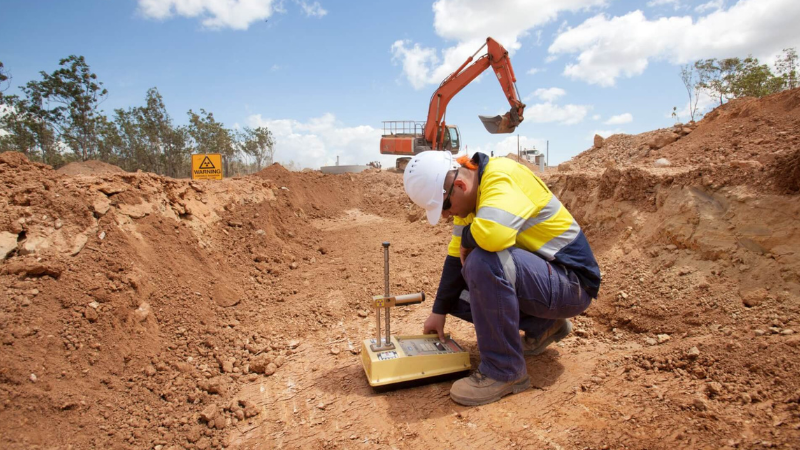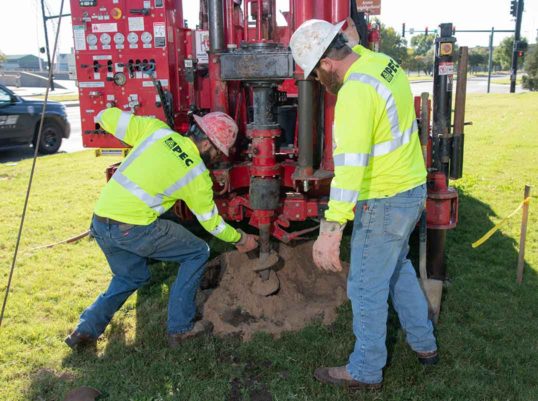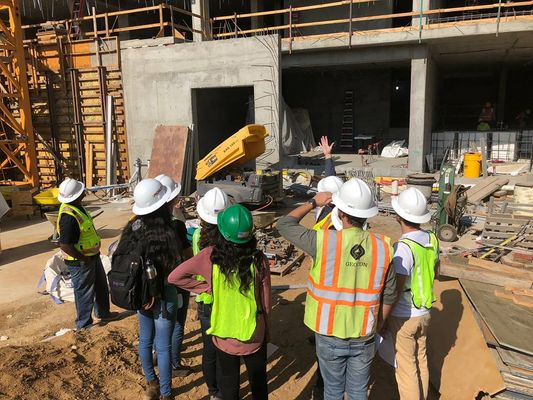Important Qualities of Effective Civil Consulting Engineers
Wiki Article
An In-depth Review of the Key Responsibilities of Geotechnical Engineers in Site Characterization and Ground Improvement Methods for Design Solutions
Geotechnical engineers are indispensable to the successful execution of engineering tasks, tasked with the crucial obligations of website characterization and the application of ground improvement strategies. Their job involves a thorough evaluation of subsurface conditions, using different testing techniques to determine dirt and rock homes.Role of Geotechnical Designers
Geotechnical designers play an essential role in the style and construction of facilities by assessing the habits of soil and rock below the surface - geotech engineer. Their responsibilities encompass examining subsurface conditions to notify style choices that make sure structural stability and safety. By conducting thorough evaluations of dirt properties, consisting of shear toughness, compressibility, and leaks in the structure, geotechnical engineers provide critical information that affects the choice of suitable construction products and strategiesIn addition to assessing soil auto mechanics, geotechnical designers are charged with determining possible dangers such as landslides, sinkholes, and ground settlements. Their know-how aids reduce dangers connected with these geotechnical phenomena, therefore protecting both the environment and public safety. They also work together carefully with other design self-controls, ensuring that geotechnical factors to consider are integrated into total task style.
In addition, geotechnical designers involve in the assessment of existing frameworks, supplying recommendations for retrofitting and repairs when essential. Their thorough understanding of soil-structure interaction is essential for the growth of lasting framework solutions. Generally, the role of geotechnical engineers is integral to the effective understanding of building and construction projects, guaranteeing they are risk-free, long lasting, and compliant with regulatory requirements.

Site Characterization Processes
Effective website characterization procedures are necessary for understanding the subsurface problems that influence job design and implementation. Geotechnical engineers employ a systematic strategy to collect, evaluate, and interpret data relating to soil, rock, and groundwater attributes. This process starts with a detailed evaluation of existing literature and historical site data, giving understandings into previous site conditions and possible difficulties.
Data evaluation follows fieldwork, where designers make use of geostatistical approaches to translate searchings for and develop geological versions. Via attentive site characterization, geotechnical designers lay the foundation for successful project implementation, optimizing and decreasing unpredicted complications source appropriation.
Dirt and Rock Screening Methods
While recognizing subsurface problems is critical, the option of ideal dirt and rock screening methods is just as necessary for exact analysis and style. Geotechnical engineers use a selection of testing methods to review the mechanical and physical properties of soil and rock materials.Laboratory tests, such as Atterberg restrictions, grain size evaluation, and unconfined compressive toughness examinations, supply important data on dirt habits under different moisture conditions and packing circumstances. These examinations help identify soil classification and anticipate settlement or shear stamina qualities vital for structure style.
In-situ testing techniques, including Requirement Penetration Tests (SPT), Cone Infiltration Tests (CPT), and pressure meter tests, permit designers to civil consulting engineers gather data straight from the ground. These approaches offer useful understandings into the dirt's density, consistency, and stratification without the need for substantial sampling.
Rock testing commonly includes core tasting and laboratory analysis to evaluate buildings like uniaxial compressive stamina and rock quality designation (RQD) With each other, these soil and rock screening approaches allow geotechnical engineers to make enlightened decisions concerning site-specific challenges, making sure the safety and security and stability of engineering remedies.
Ground Enhancement Strategies
Ground renovation strategies are vital for improving the engineering residential or commercial properties of soil, thereby boosting its load-bearing capability and lowering negotiation. These techniques are important in resolving obstacles provided by weak or troublesome soils, which can significantly affect the security and resilience of structures.Numerous ground renovation strategies are used, consisting of compaction, grouting, and dirt stablizing. Grouting, on the other hand, involves infusing a fluid material into the ground to fill voids and enhance dirt cohesion.
Soil stablizing incorporates a range of methods, from chemical ingredients to mechanical therapies, targeted at boosting the dirt's resistance to erosion and deformation. Techniques such as lime stablizing or concrete mixing alter the properties of the dirt at a particle level, enhancing its total efficiency.
Relevance of Geotechnical Evaluations
Geotechnical assessments play an important role in the planning and layout of engineering tasks, as they give crucial details regarding the subsurface conditions. Recognizing dirt homes, rock formations, groundwater levels, and potential geohazards is vital for guaranteeing the security and safety and security of frameworks. These assessments make it possible for engineers to make enlightened decisions concerning website option, design parameters, and construction techniques.
The significance of geotechnical assessments prolongs past preliminary task phases; they contribute in risk monitoring and cost efficiency. By identifying prospective concerns early, such as dirt settlement, incline instability, or extreme groundwater, designers can create proper mitigation approaches, minimizing the likelihood of expensive hold-ups and structural failings. Additionally, these analyses sustain conformity with regulatory needs and enhance the sustainability of engineering methods.

Conclusion
To conclude, geotechnical designers are crucial to ensuring the security and security of engineering tasks through detailed website characterization and ground enhancement techniques. civil consulting engineers. Their methodical approach to examining subsurface problems, integrated with their referrals for reliable ground adjustment, significantly improves soil properties and load-bearing ability. The competence of geotechnical engineers not only helps with educated task preparation yet also makes sure compliance with guidelines and promotes effective communication among stakeholders, inevitably adding to effective design end resultsGeotechnical engineers play a pivotal role in the design and building of facilities by analyzing the habits of dirt and rock below the surface area. By performing in-depth analyses of soil properties, including shear compressibility, leaks in the structure, and strength, geotechnical engineers supply important information that influences the selection of appropriate building materials and techniques.
In enhancement to assessing dirt auto mechanics, geotechnical engineers are tasked with identifying possible dangers such as landslides, sinkholes, and ground negotiations. Geotechnical designers use a methodical technique to collect, assess, and analyze information concerning dirt, groundwater, and rock characteristics. By recognizing prospective issues early, such as dirt settlement, slope instability, or too much groundwater, engineers can develop suitable mitigation approaches, minimizing the possibility of costly hold-ups and structural failings.
Report this wiki page